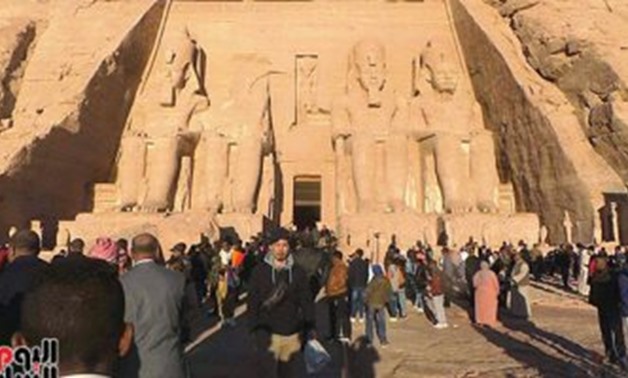
File -Abu Simbel temple.
CAIRO – 16 June 2020: Egypt’s Ministry of Tourism and Antiquities is preparing to re-open several major archaeological sites, after having been closed since March 2020 as part of the country’s precautionary measures to combat the novel coronavirus.
Egypt’s Minister of Tourism and Antiquities Khaled el-Enany confirmed that several major archaeological sites will be opened in July, including eight sites in four governorates. The gradual opening of the sites will come in parallel with the gradual return of foreign tourism.
The eight archaeological sites that will be opened at the beginning of July are the Giza Pyramids complex, Egyptian Museum in Tahrir Square, Citadel of Saladin, Karnak and Luxor temples, Philae and Abu Simbel temples and Hurghada Museum.
Additionally, the ministry will launch a number of important archaeological projects during the coming period, in different governorates of Egypt, and all will be completed during the next 60 days.
This includes opening the Baron Empain Palace in Heliopolis, Kafr-el-Sheikh Museum, Sharm El Sheikh Museum and the Royal Vehicles Museum, the National Museum of Egyptian Civilization in Fustat, the Cairo Airport museum and the New Administrative Capital museum.
The Ministry of Tourism and Antiquities set a number of precautionary measures for the Egyptian and foreign archaeological missions working at various archaeological sites amid the COVID-19 pandemic.
Secretary-General of the Supreme Council of Antiquities Mostafa Waziri previously explained that these precautionary measures oblige each mission to stick to the necessary disinfection and hygiene measures, measure the daily temperatures of staff and mission members before work, wear face-masks and gloves during work, and to periodically disinfect all tools used in excavation works.
Also, the plan stipulated that the number of workers at the excavation site should not exceed 30 people, maintaining safe distance between workers in open spaces and in closed cemeteries so that no more than four people, including the antiquities inspector, would work inside the cemetery or burial well.
Waziri stressed that the head of the mission and the accompanying antiquities inspector should regularly educate the mission's members and staff about the dangers of the novel virus, noting the need for everyone to adhere to the preventive measures, even while drinking and eating during the breaks. Waziri explained that workers must bring their own personal items and not trade food and drink.
It is worth mentioning that a number of health safety controls have been adopted, and must be applied and followed by museums and archaeological sites to ensure the health and safety of visitors, archaeologists, inspectors, museum trustees and all staff members.

Comments
Leave a Comment